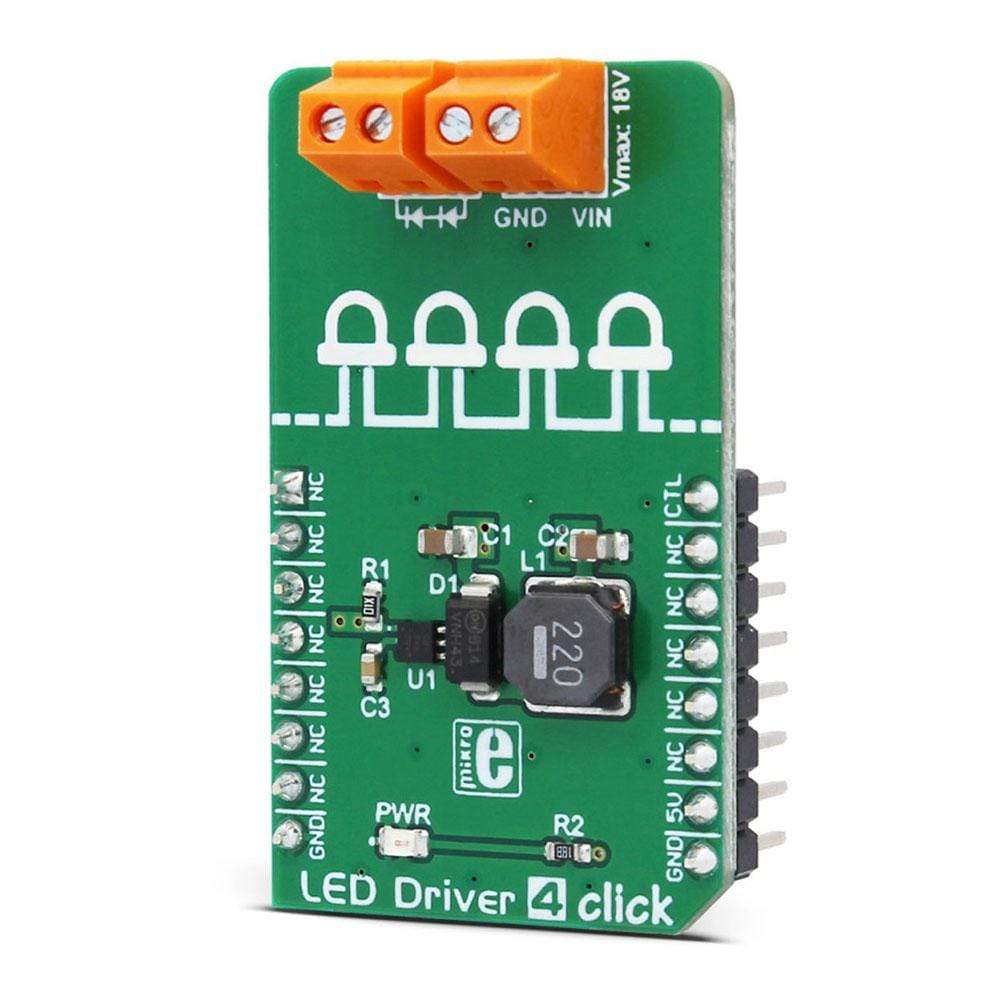
Overview
The LED Driver 4 Click Board™ is a form of a high-efficiency boost converter that is ideally suited for driving an array of white LEDs. The driver can dim the connected LED array, without producing any noise on the output. The LED Driver 4 Click Board™ is capable of driving a LED array with up to 26V, providing a constant current to the LED segments.
The LED segments are connected in series between the output terminals. This results in even current distribution, thus providing a uniform brightness of each LED. A built-in soft-start function prevents large inrush current. Output open LED circuit, thermal, and under-voltage protection, provide reliable operation.
Downloads
Le LED Driver 4 Click Board™ est une forme de convertisseur élévateur à haut rendement qui est idéal pour piloter un ensemble de LED blanches. Le pilote peut atténuer l'intensité du réseau de LED connecté, sans produire de bruit sur la sortie. Le LED Driver 4 Click Board™ est capable de piloter un réseau de LED jusqu'à 26 V, fournissant un courant constant aux segments de LED.
Les segments LED sont connectés en série entre les bornes de sortie. Cela permet une distribution uniforme du courant, ce qui assure une luminosité uniforme de chaque LED. Une fonction de démarrage progressif intégrée empêche un courant d'appel important. Le circuit LED ouvert de sortie, la protection thermique et la protection contre les sous-tensions assurent un fonctionnement fiable.
| General Information | |
|---|---|
Part Number (SKU) |
MIKROE-3037
|
Manufacturer |
|
| Physical and Mechanical | |
Weight |
0.02 kg
|
| Other | |
Country of Origin |
|
HS Code Customs Tariff code
|
|
EAN |
8606018713066
|
Warranty |
|
Frequently Asked Questions
Have a Question?
Be the first to ask a question about this.

